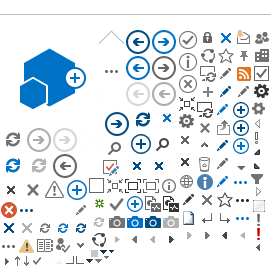Should South Africa catch the financial market tokenisation wave?
By Lyle Horsley and Gerhard van Deventer | September 2022
LYLE HORSLEY
Divisional Head of the Fintech Unit at the South African Reserve Bank .
| |
GERHARD VAN DEVENTER
Senior Fintech Analyst in the Fintech Unit of the South African Reserve Bank, focusing on financial markets innovation and the impact of distributed ledger technologies on financial markets. |
Until recently, one of the most significant innovations in the financial markets was dematerialisation - a process of replacing the physical paper-based certificates of securities with electronic records of ownership. The process of converting certain securities into an electronic form allows for the electronic recording of the trading, clearing and settlement of securities. Dematerialisation allows for greater convenience and benefits to investors, such as a reduction in the risk of fraud or theft associated with paper-based securities and reduced costs typically associated with printing, transporting, or processing physical securities. Today, records and ownership of securities are held in electronic book entries in a securities settlement system (or SSS), typically with a licensed entity called a central securities depository (CSD). The CSD and its SSS serve as the 'single source of the truth' recording the ownership of securities. In the South African context, an indirect securities holding system allows securities to be held through several intermediaries with each recording ownership in its own books, creating a layered network between the issuer and the ultimate beneficiary of the securities. Various intermediaries must reconcile their respective ledgers or accounts against the 'source of truth' held by the CSD resulting in duplication of the same information held on multiple databases. Such duplication results in inefficiencies, complexity, and increased costs, and begs the question: can technology solve some of the current challenges?
Financial market infrastructures such as the CSDs, SSSs, central counterparties, payment systems, and even exchanges in the SA context, are often considered to be critical infrastructures due to their importance in maintaining stability and integrity in the trading, clearing and settlement of securities. However, innovation can potentially disrupt existing intermediaries and prompt further development in response to changing market dynamics. In response to increasing digitalisation in the financial sector, the South African Reserve Bank (SARB) kicked off Project Khokha in 2018 to obtain practical experience in distributed ledger technology (DLT) and to consider its implications for financial markets. The first phase of Project Khokha (PK1) explored the use of DLT for interbank payments and settlement through a proof-of-concept (PoC) issuing a wholesale central bank digital currency. The project proved that it was possible to replicate some of the functions of South Africa's real-time gross settlement system at scale and speed using a standard messaging format, while maintaining confidentiality and privacy and providing visibility for both operational management and oversight.
More recently, Project Khokha 2, in collaboration with the Intergovernmental Fintech Working Group, highlighted that DLT potentially represents a new way to record and store information and transfer value on a peer-to-peer basis, without the need for a centralised intermediary. DLT can allow for the ownership of securities to be reflected on a single shared ledger accessible, across multiple nodes, which may hold various benefits, including greater efficiencies; enhanced price transparency; reduction in settlement times; and greater access to data for regulators depending on the network design.
A further important consideration in the exploration of DLT in the securities trade life cycle is how the two legs of the sale of securities – the delivery leg that transfers the security and the payments leg that transfers the cash – can be settled on DLT. Tokenisation represents a different way for securities, money and other forms of value to be represented, exchanged and recorded, moving from a master copy of the truth held by a single entity and duplicated by other roles players, to a distributed ledger accessed by various role players.
The application of DLT to the securities trade life cycle, allows the securities leg and the cash leg of the trade to be tokenised, allowing for real-time settlement on DLT-based networks. This potentially opens new channels for central bank money to continue being used as a riskless and safe settlement asset in tokenised financial markets. While PK2 focused on a specific use case in a PoC, the intention is that the insights gained from PK2 can extended to different use cases. Insights gained through practical exploration is critical to inform our policy and regulatory thinking, and to assist policymakers, regulators and industry gain a deeper understanding of the technology and the potential benefits and risks associated with tokenisation.
The application of DLT in financial markets has important implications for existing market participants and the settlement system infrastructure. More detailed work and further engagement with relevant stakeholders is needed to understand and further unpack the impact of these emerging technological developments. PK2 usefully highlights the areas that require further analysis and discussion with policymakers, regulators and industry participants in shaping South Africa's financial markets for the future.
It is also important for policymakers and regulators to strike an appropriate balance between supporting innovation and setting the necessary rules and frameworks to ensure a robust and sound framework for future market developments.
Our work in this area is continuing.
 Disclaimer: As the IFWG we are enthusiastic to include diverse voices through our media content. The opinions of participants do not necessarily represent the views of the IFWG and their respective organisations.
Disclaimer: As the IFWG we are enthusiastic to include diverse voices through our media content. The opinions of participants do not necessarily represent the views of the IFWG and their respective organisations.
